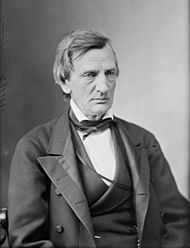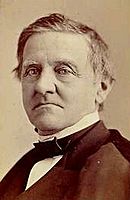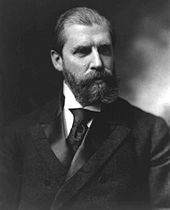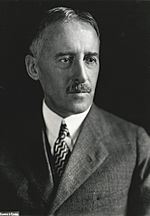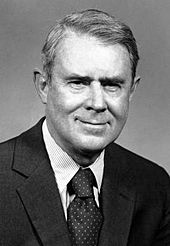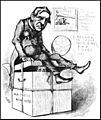History of the New York City Bar Association facts for kids
The New York City Bar Association is a group for lawyers in New York City. It started in 1870 and was first called the Association of the Bar of the City of New York. It is the oldest group of its kind in the country. With more than 24,000 members, it is also one of the biggest and most important.
Contents
- Why Was the New York City Bar Association Formed?
- How the New York City Bar Association Began
- What Happened from 1880 to 1900?
- How the Association Changed from 1900 to 1920
- Important Years: 1920 to 1940
- The Association from 1940 to 1960
- The Association from 1960 to 1980
- The Association from 1980 to 2000
- Images for kids
Why Was the New York City Bar Association Formed?
After the American Civil War, the reputation of lawyers in New York was not very good. In 1846, new rules made it easier to become a lawyer. Also, judges were chosen by voting, not by being appointed. By the 1860s, there were many lawyers who were not well-trained. Judges were also afraid to make rules stricter because they worried about losing votes.
Problems with Lawyers and Judges in New York
There were also big scandals and claims of dishonesty. Some famous New York lawyers were linked to politicians and powerful business people. One major event was the Erie War. This was a two-year legal fight over the Erie Railroad. Important lawyers and judges were involved in dishonest actions. They were accused of trying to buy votes and block legal actions. One judge, George C. Barnard, was later removed from his job because of corruption.
This situation made many people want to fix the legal profession. People like Charles Francis Adams, Jr., a lawyer, said it was a "strange twisting of the law." The New York Times newspaper also called for a group for lawyers, like those in London. In December 1869, important lawyers started to plan a new organization. They wanted to "help the profession keep its proper place" and "serve the public."
How the New York City Bar Association Began
This plan led to the creation of the New York City Bar Association. Two hundred leading New York lawyers signed the plan. They met on February 15, 1870, to write the group's rules. A year later, the Association officially started. It had 493 members, which was about one in eight lawyers in New York City.
The Association's main goal was to improve the law. It wanted to "promote reforms in the law" and "improve how justice is given." It also aimed to "raise the standard of honesty" among lawyers. The group also created a large law library.
Early Leaders and Their Impact
After the trials of the Tweed Ring, William M. Evarts became the first president. He was a well-known lawyer who had defended President Andrew Johnson. He was president for nine years. Samuel J. Tilden, a national political leader, became vice president. He was known for speaking out against dishonest government.
The Association quickly supported government reform in New York. Its members helped in big investigations into corruption. Tilden and other members helped get "Boss" Tweed and other politicians found guilty of stealing a lot of money. In 1873, the Association's committee on judges helped remove four dishonest New York judges.
What Happened from 1880 to 1900?
In the mid-1870s, the reform movement slowed down. The Association could not get changes passed to how judges were chosen. Many of the first members also stopped being as active. Tilden left after he did not win the election for President of the United States. Evarts became United States Secretary of State.
Focus on Standards and New Buildings
In the following years, the Association focused more on its own projects. It worked on improving the rules for becoming a lawyer. In 1877, its members also helped create the New York State Bar Association. A big success was stopping a plan to change civil law. Many members, especially president James Coolidge Carter, did not agree with this plan.
In 1896, the Association moved into its current building. This building, called the House, is on West 44th Street. It was designed by a famous architect named Cyrus L.W. Eidlitz.
How the Association Changed from 1900 to 1920
In the early 1900s, the leaders of the Association were older. Many were also strong supporters of the Republican Party. Because of this, lawyers who wanted to work with both parties on government reform joined other groups. The Association started to focus more on its own internal activities.
Important Years: 1920 to 1940
After World War I, the Association improved its public image. It also gained more political respect.
In a famous event, Charles Evans Hughes led the Association in opposing a decision by the New York State Legislature. The Legislature had removed five assemblymen who were elected from the Socialist Party. The Association published a statement against this decision in major newspapers. Hughes then led a group to Albany to protest. This event made national news. It helped the Association become known as a group that cared about public issues.
When Hughes became president in 1927, he worked to connect the Association with the public. He also increased its role in legal reform. He started radio talks about law. He also helped change laws about lawsuits and bankruptcy.
Fighting Corruption and Welcoming Women
Hughes's successor, Charles Culp Burlingham, worked with Governor Franklin D. Roosevelt. They led an investigation into dishonest judges and court fixing. This led to two judges being charged and sixteen lawyers losing their licenses in 1930. Samuel Seabury, who later became president, led other investigations. These led to more lawyers being removed from their jobs.
In 1937, women were allowed to become members of the Association. By the late 1930s, the number of members had more than doubled.
The Association from 1940 to 1960
During World War II, the Association's activities were limited. Many members were serving in the military. But after the war, membership grew again. This was under the leadership of president Harrison Tweed. He was the grandson of William Evarts. Tweed helped the Association grow by adding more social events. He also reorganized the group into its current form. He created a permanent director and set up rotating memberships for the many committees.
The Association spoke out against the investigations of Senator Joseph McCarthy. These investigations looked into suspected communist ties of government workers. When another lawyer group suggested that all lawyers should take loyalty oaths, the New York City Bar Association voted against it. Some members, including presidents Robert P. Patterson and Whitney North Seymour, openly criticized McCarthy's methods. President Allen T. Klots started a program to provide legal help to government workers being questioned. The Association also criticized the Bricker Amendment, which aimed to limit the President's power in foreign agreements.
Throughout the 1950s and 1960s, the Association continued to improve its organization. It hired more staff and added more specialized committees. It also worked hard to reorganize the legal system. The Association published important studies during these years. One was about privacy, and another was about family court. Many of its ideas were later used in new laws.
The Association from 1960 to 1980
The Association was very involved in the social changes of the late 1960s. It invited Dr. Martin Luther King Jr. and Earl Warren to speak. This was at a time when some other lawyer groups were still against civil rights laws. The Association also supported the legality of the Civil Rights Act of 1964. The Association itself became more open. In 1972, it elected its first female member to the executive committee. It also made it easier for new members to join.
The Association also pushed for civilian oversight of the New York City Police Department. It also worked to update New York State's Mental Hygiene Law. As Earl Warren said in 1963, "there is no Bar Association I know... that has contributed more to legal history... than this great Association."
From the late 1960s, the Association also became more active in national legal discussions. Presidents Bernard Botein and Francis T. P. Plimpton successfully led a group against President Richard Nixon's choices for the Supreme Court. They opposed these choices because of their poor record on civil rights. A new committee, led by Ruth Bader Ginsburg, became a strong supporter of the Equal Rights Amendment and gay rights.
The Association also got deeply involved in the Watergate scandal. It published reports calling for Richard Nixon to be removed from office. After Nixon was pardoned, the Bar's committee, led by Arthur L. Liman, successfully worked to have Nixon lose his law license in New York. This was the first time Nixon was found legally responsible for any wrongdoing related to Watergate.
Under the leadership of Cyrus Vance, the Association finally helped change how judges were chosen in New York State. Vance led a group that wrote new state rules. These rules created a system where the governor would appoint judges for the New York Court of Appeals. They also created a central court administration. These were goals the Association had worked on for a century. Voters approved these changes in 1977.
The Association from 1980 to 2000
In the early 1980s, under presidents Oscar M. Ruebhausen and Louis A. Craco, the Association worked to improve its relationships with other parts of the legal profession. It worked more closely with local lawyer groups in other New York City areas. It also reached out more to smaller law firms and individual lawyers.
Helping Those in Need and Promoting Diversity
Craco also expanded the Association's work in providing free legal help. He created Volunteers of Legal Service (VOLS). This program helped large law firms provide legal help to people with low incomes. VOLS helped people with criminal cases and civil issues like housing and family law. It also helped with new problems in the 1980s. The VOLS AIDS project started in 1988. The VOLS Legalization Support Project began in 1989 to help New York's growing number of undocumented immigrants.
In the late 1980s and 1990s, the Association became more involved in national issues. In 1987, it decided to review all future nominees to the United States Supreme Court. It then opposed President Ronald Reagan's choice of Robert Bork for the Supreme Court. The Association also worked to increase its own diversity. Under presidents Sheldon Oliensis and Conrad K. Harper, the Association created a policy to include more women and minorities in its staff, members, and leaders. It also encouraged similar programs in large private law firms.
Images for kids


